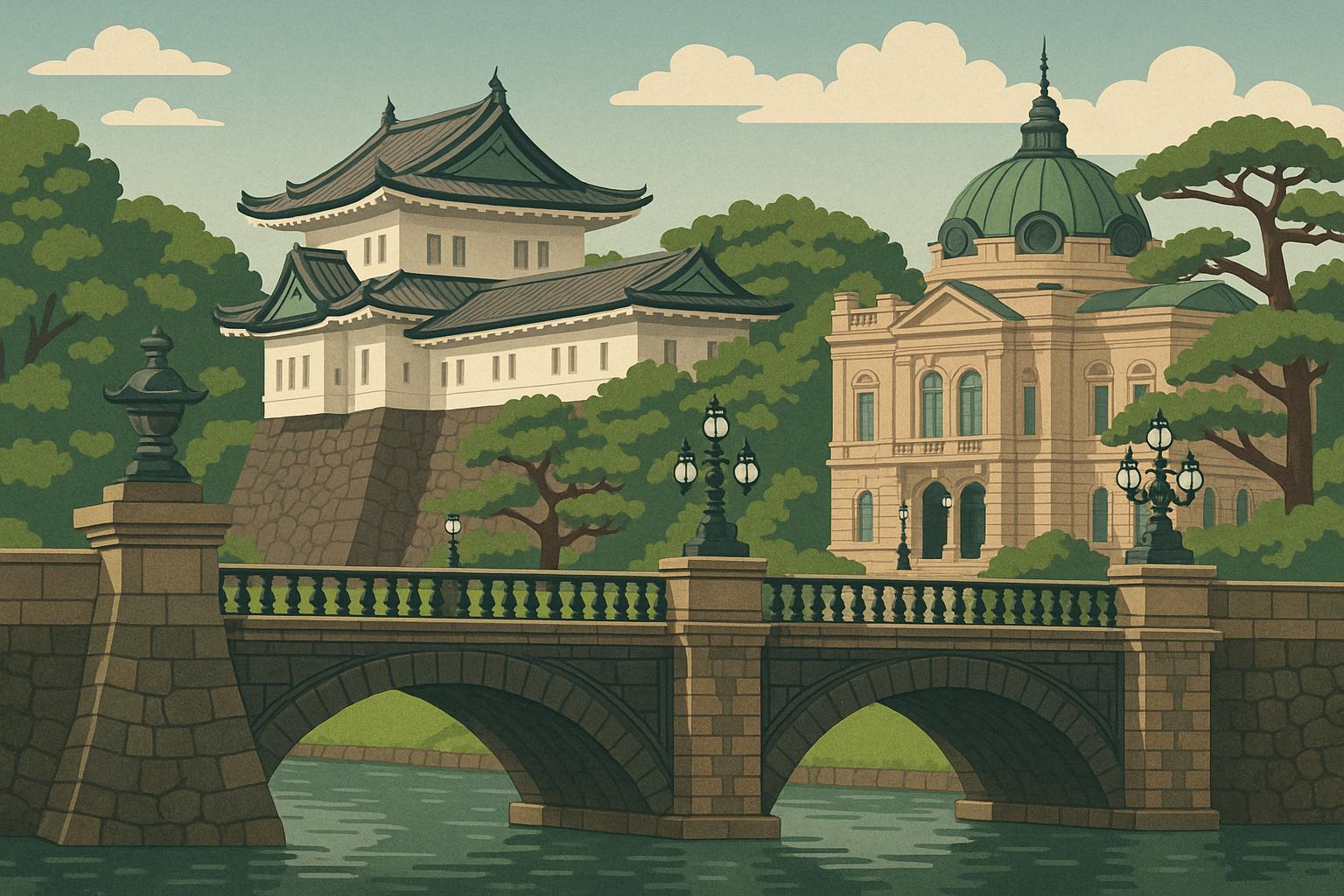Contents
The Cultural Fusion of the Japanese Imperial Palace
The Japanese Imperial Palace serves as a remarkable emblem of cultural fusion, representing a blend of traditional Japanese aesthetics and diverse international influences. This integration is reflected in its architecture, art, and the symbolic role it occupies within Japanese society. As both a cultural and political center, the palace stands as a testament to Japan’s unique ability to integrate foreign elements without losing its national identity. This balance between preservation and adaptation has allowed the Imperial Palace to become a contemporary monument blending historical significance with modern resonance.
Architectural Synthesis
The architecture of the Imperial Palace provides a vivid illustration of cultural amalgamation. The structure itself incorporates elements from various historical periods and styles, signifying the evolution of Japanese architecture over the centuries. Built upon the site of Edo Castle, the palace retains aspects of traditional Japanese castle architecture. Notable features include the unique wooden structures, sprawling gardens, and the distinguished stone walls that encircle it, illustrating indigenous engineering and design. These elements highlight Japanese ingenuity in utilizing natural materials and harmonizing structures with the surrounding landscape.
However, influence from Western architecture is evident, particularly in the Meiji and Taisho eras when Western building materials and styles began to blend with Japanese designs. This period was marked by Japan’s eagerness to learn from Western advancements while shaping them to suit Japanese sensibilities. This can be seen in the use of Western-style roofing techniques and formal garden layouts, reflecting an openness to foreign ideas while maintaining a distinct Japanese identity. The integration of brick and metal, along with the introduction of large pane windows, showcases the technical exchange that embellished the architectural landscape of the palace with a modern flair.
Artistic Convergence
Art within the palace also exhibits a fusion of cultures, making the interiors as rich and diverse as the exteriors. The interior decorations often combine Japanese traditional craftsmanship with styles inspired by international movements. For instance, screens (byobu) and sliding doors (fusuma) showcase native painting and calligraphy, bringing traditional Japanese stories and deities to life. The meticulous brushwork and themes of nature and mythology are testimonies to Japan’s cultural heritage.
However, some ornamental details draw inspiration from Western Art Nouveau and Art Deco movements. These influences are reflected in the intricate patterns, curvilinear forms, and luxurious materials that adorn certain sections of the palace. Such artistic exchanges were facilitated in part by Japan’s openness during periods of heightened international interaction, particularly during The Taisho era, which saw an influx of Western artistic and cultural influences.
Moreover, the collection within the Imperial Household Agency includes diverse artworks that highlight this blend, featuring both Japanese masterpieces and pieces obtained from cultural exchanges with other countries. This collection serves as a repository of international dialogues, showcasing foreign pieces and allowing for a continuous exchange of artistic ideas, enhancing the cultural heritage housed within the palace.
Cultural and Historical Context
The cultural fusion visible at the Imperial Palace is deeply tied to Japan’s historical trajectory. Following the Meiji Restoration in 1868, Japan sought to modernize rapidly by integrating Western technology and ideas, a process that inevitably influenced cultural symbols, including the Imperial Palace. This major transformative period in Japanese history addressed the need to build a nation that could match Western powers politically and militarily, inspiring cultural and technological advancements.
The adoption of Western customs was carefully considered and selectively implemented to complement traditional practices. This selective incorporation is evident in national architectures such as the Imperial Palace, reflecting Japan’s strategy of blending old and new to maintain continuity while embracing change. The palace, therefore, symbolizes more than just the residence of the Emperor. It represents the dynamic interplay between Japan’s rich historical heritage and its interactions with the broader world. For further exploration into this historical context, consult detailed resources available through academic and cultural institutions.
Conclusion
The Japanese Imperial Palace embodies a unique cultural synthesis, encapsulating a mix of indigenous and international influences over centuries. Its architecture and art reflect Japan’s adaptive approach to cultural integration, mirroring the country’s historical journey and contemporary identity. The palace stands as a holistic representation of Japanese aesthetics and global influences coalescing. These influences underscore Japan’s long-standing engagement with the world, revealing a nation rooted in its history yet continually evolving. For visitors and scholars alike, the palace serves as a testament to the harmonious coexistence of tradition and modernity, offering an insightful perspective into how historical retention can cohabit with innovative growth. As the residence continues to function as both a cultural symbol and an active seat of monarchy, it ensures that Japan’s historical narrative is alive and continually enriched by its openness to the world.

